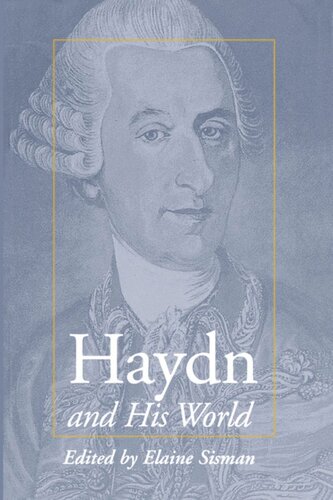

Most ebook files are in PDF format, so you can easily read them using various software such as Foxit Reader or directly on the Google Chrome browser.
Some ebook files are released by publishers in other formats such as .awz, .mobi, .epub, .fb2, etc. You may need to install specific software to read these formats on mobile/PC, such as Calibre.
Please read the tutorial at this link: https://ebookbell.com/faq
We offer FREE conversion to the popular formats you request; however, this may take some time. Therefore, right after payment, please email us, and we will try to provide the service as quickly as possible.
For some exceptional file formats or broken links (if any), please refrain from opening any disputes. Instead, email us first, and we will try to assist within a maximum of 6 hours.
EbookBell Team

5.0
110 reviewsJoseph Haydn's symphonies and string quartets are staples of the concert repertory, yet many aspects of this founding genius of the Viennese Classical style are only beginning to be explored. From local Kapellmeister to international icon, Haydn achieved success by developing a musical language aimed at both the connoisseurs and amateurs of the emerging musical public. In this volume, the first collection of essays in English devoted to this composer, a group of leading musicologists examines Haydn's works in relation to the aesthetic and cultural crosscurrents of his time.
Haydn and His World opens with an examination of the contexts of the composer's late oratorios: James Webster connects the Creation with the sublime--the eighteenth-century term for artistic experience of overwhelming power--and Leon Botstein explores the reception of Haydn's Seasons in terms of the changing views of programmatic music in the nineteenth century. Essays on Haydn's instrumental music include Mary Hunter on London chamber music as models of private and public performance, fortepianist Tom Beghin on rhetorical aspects of the Piano Sonata in D Major, XVI:42, Mark Evan Bonds on the real meaning behind contemporary comparisons of symphonies to the Pindaric ode, and Elaine R. Sisman on Haydn's Shakespeare, Haydn as Shakespeare, and "originality." Finally, Rebecca Green draws on primary sources to place one of Haydn's Goldoni operas at the center of the Eszterháza operatic culture of the 1770s.
The book also includes two extensive late-eighteenth-century discussions, translated into English for the first time, of music and musicians in Haydn's milieu, as well as a fascinating reconstruction of the contents of Haydn's library, which shows him fully conversant with the intellectual and artistic trends of the era.